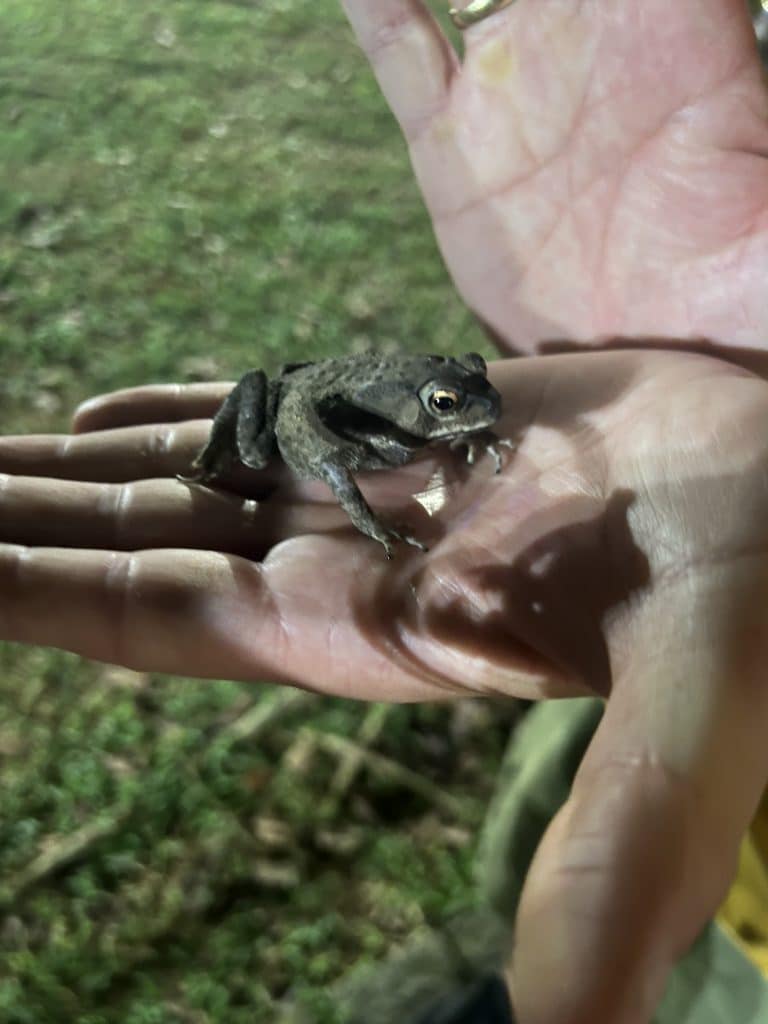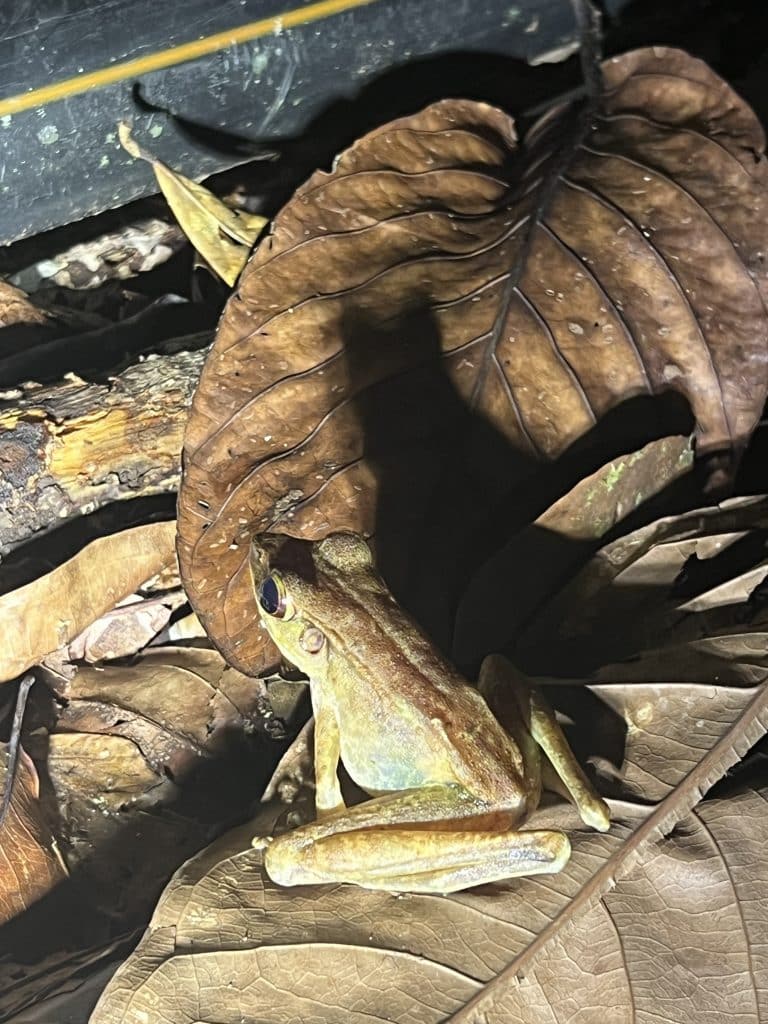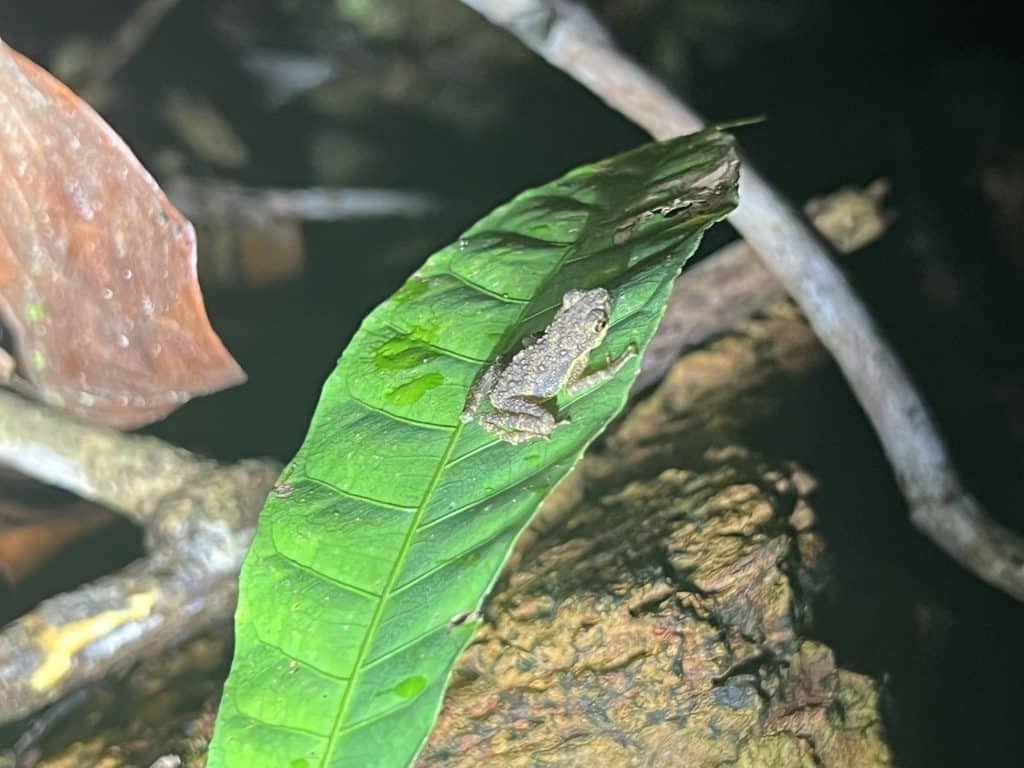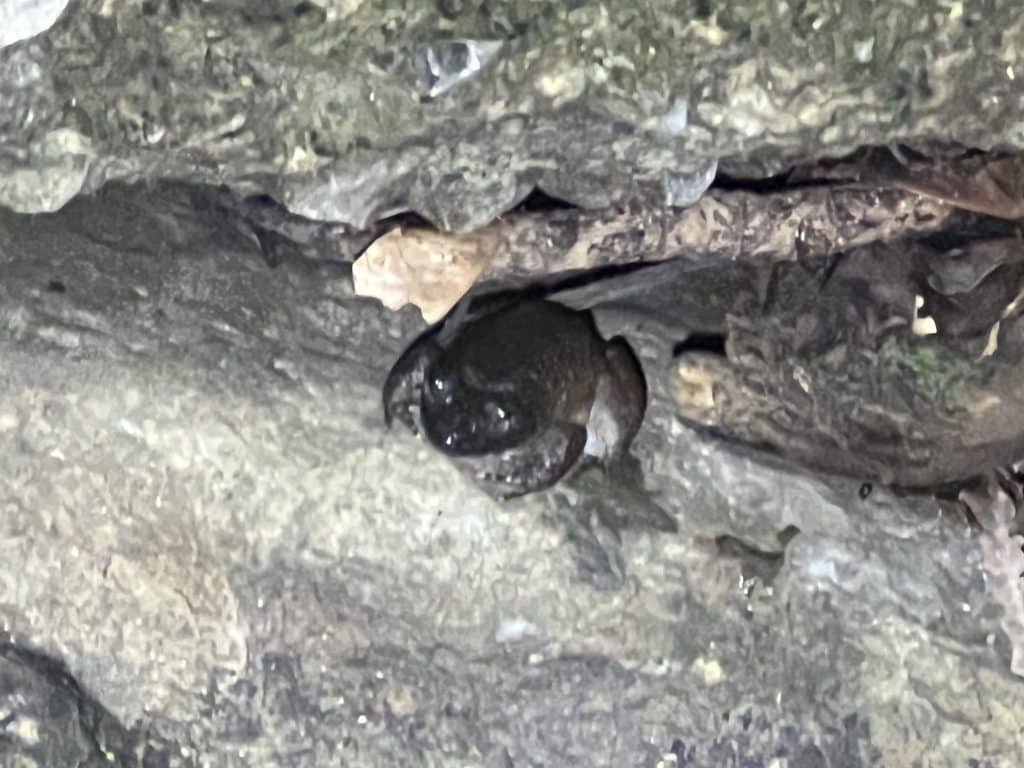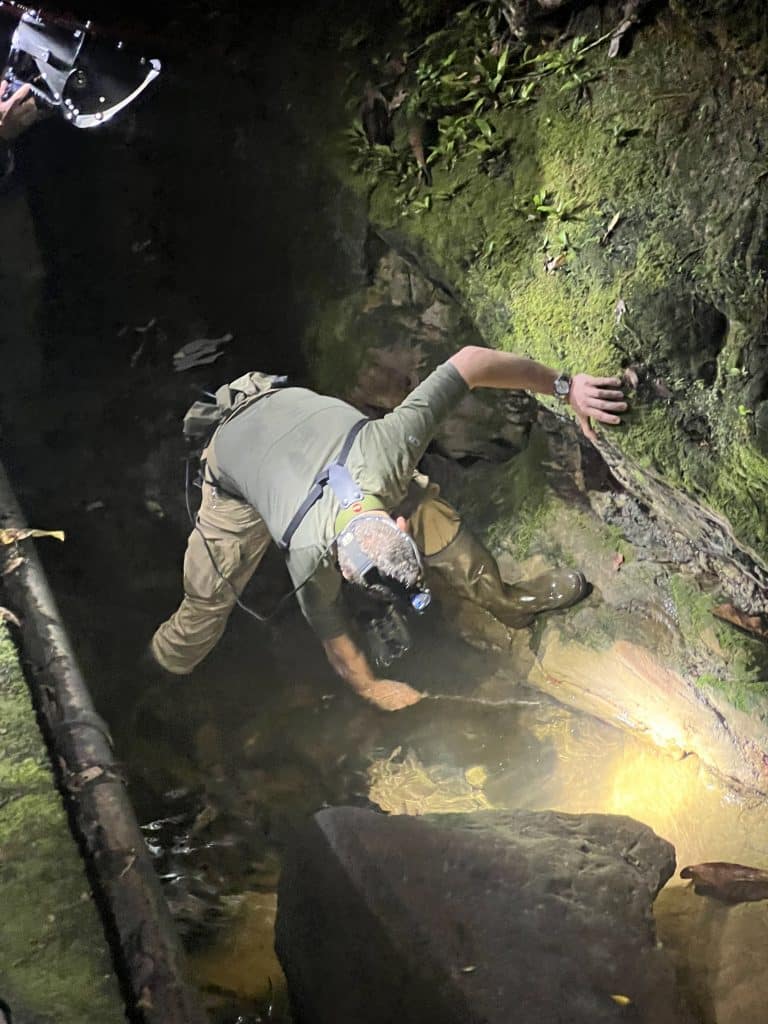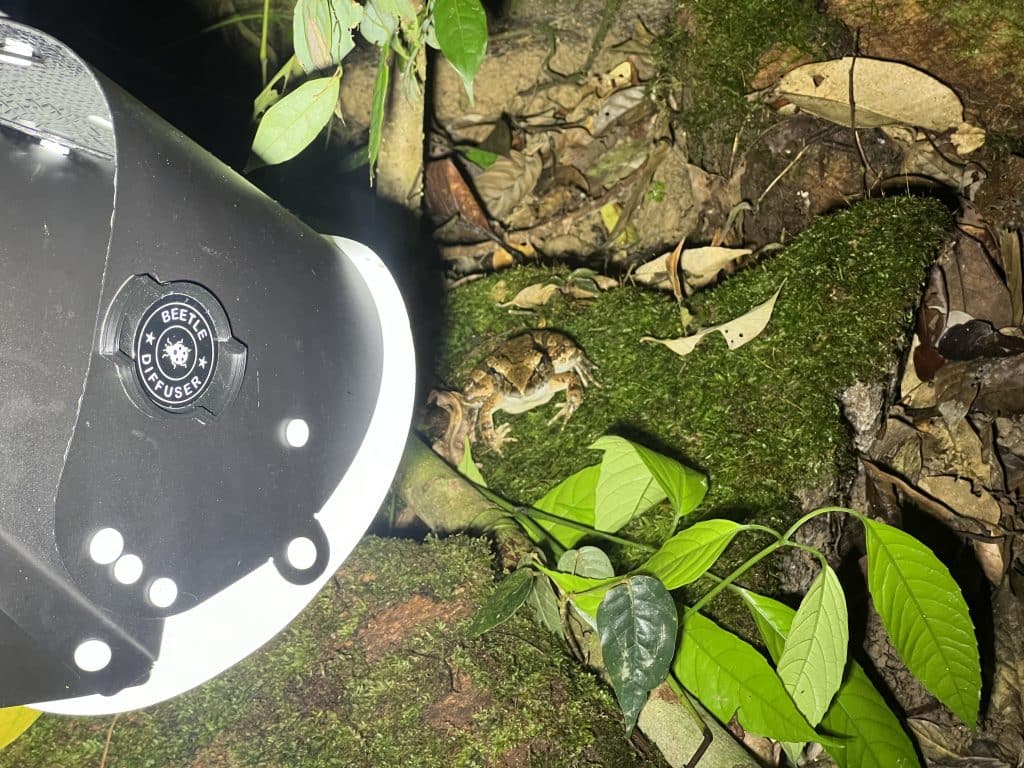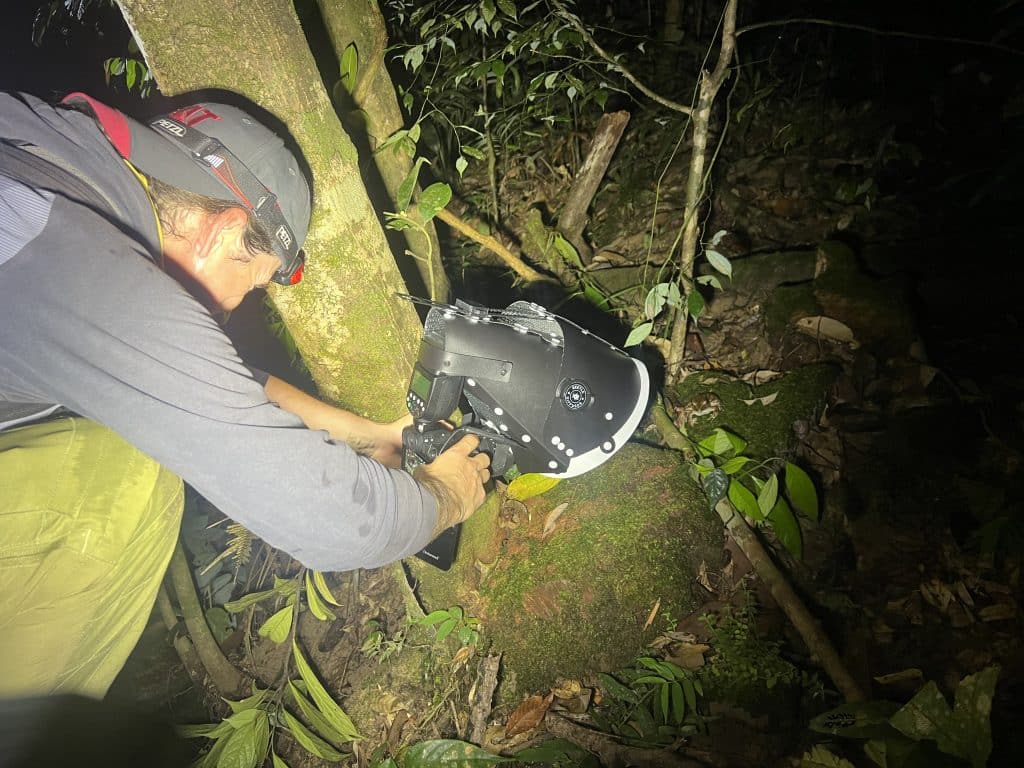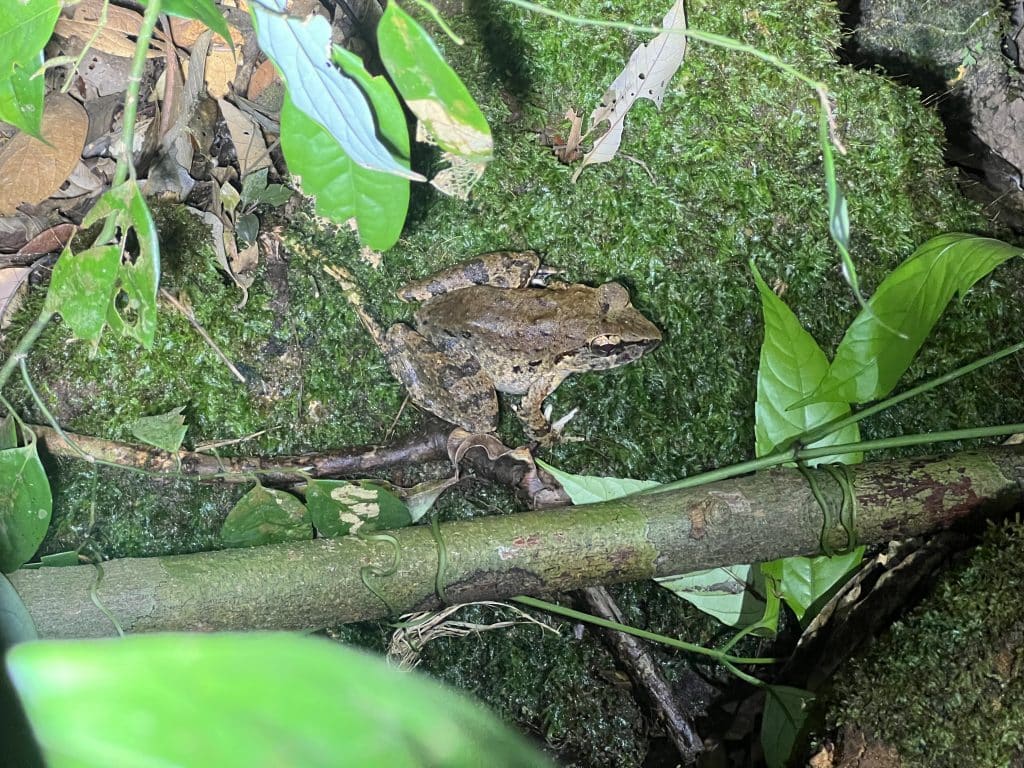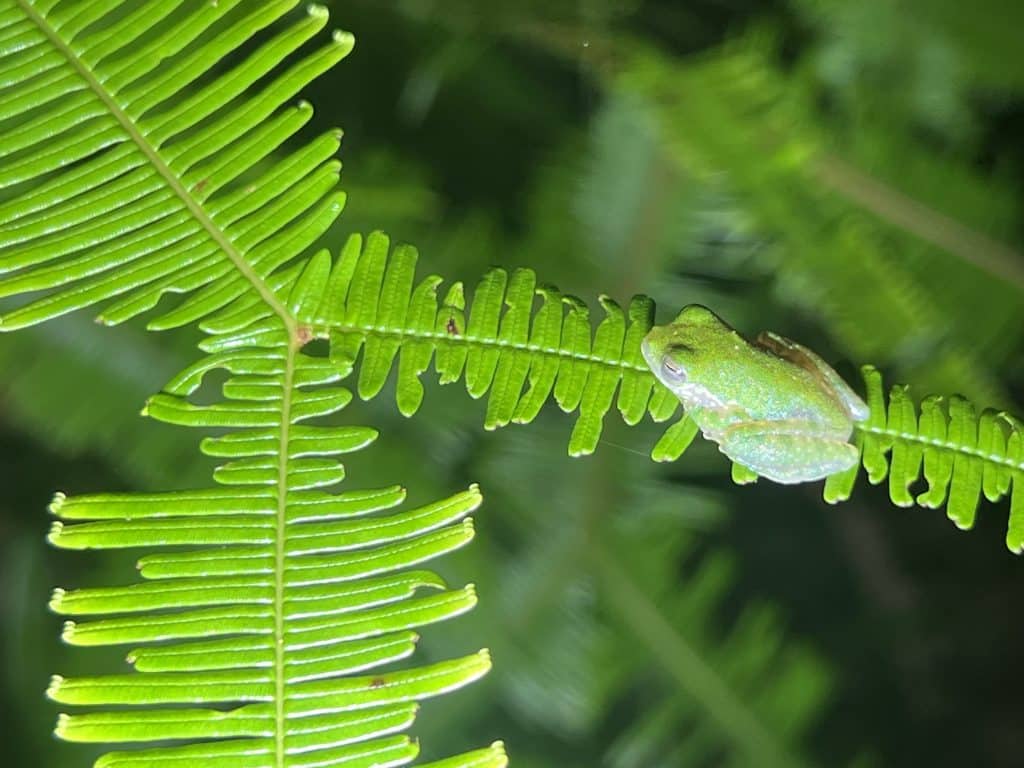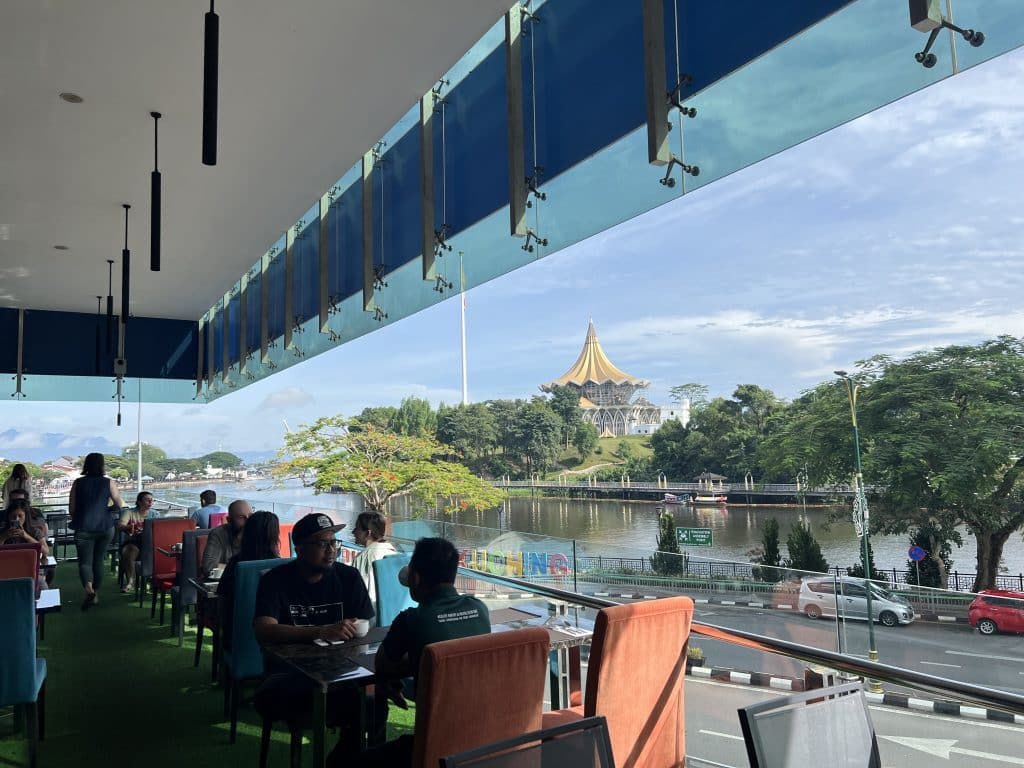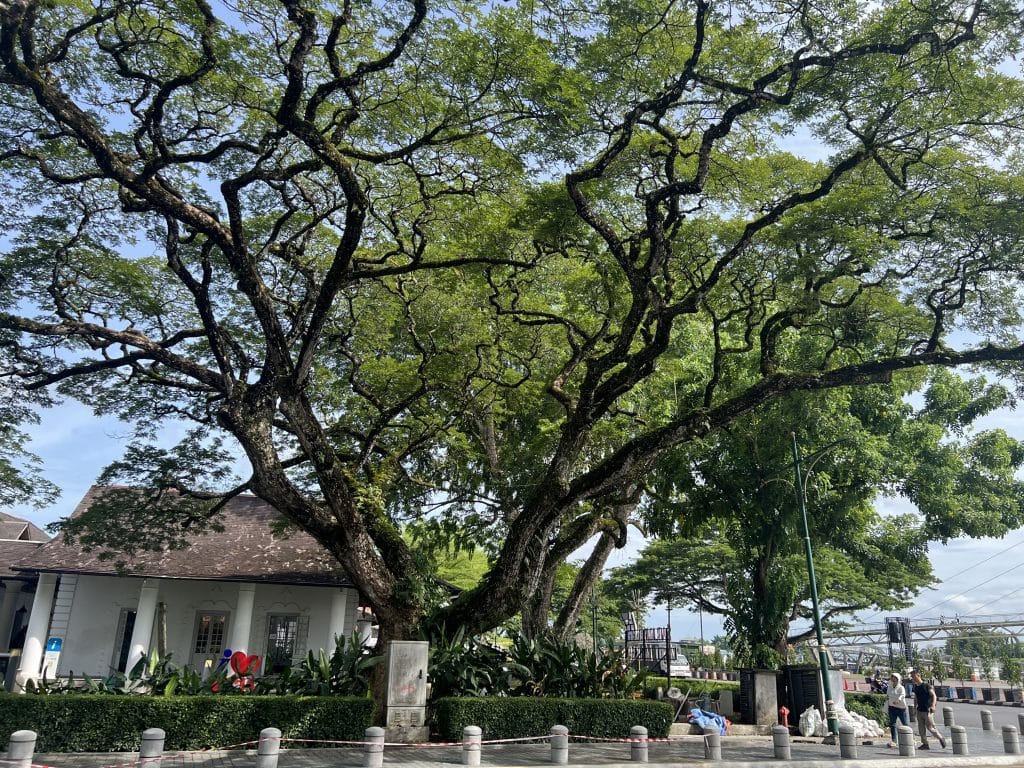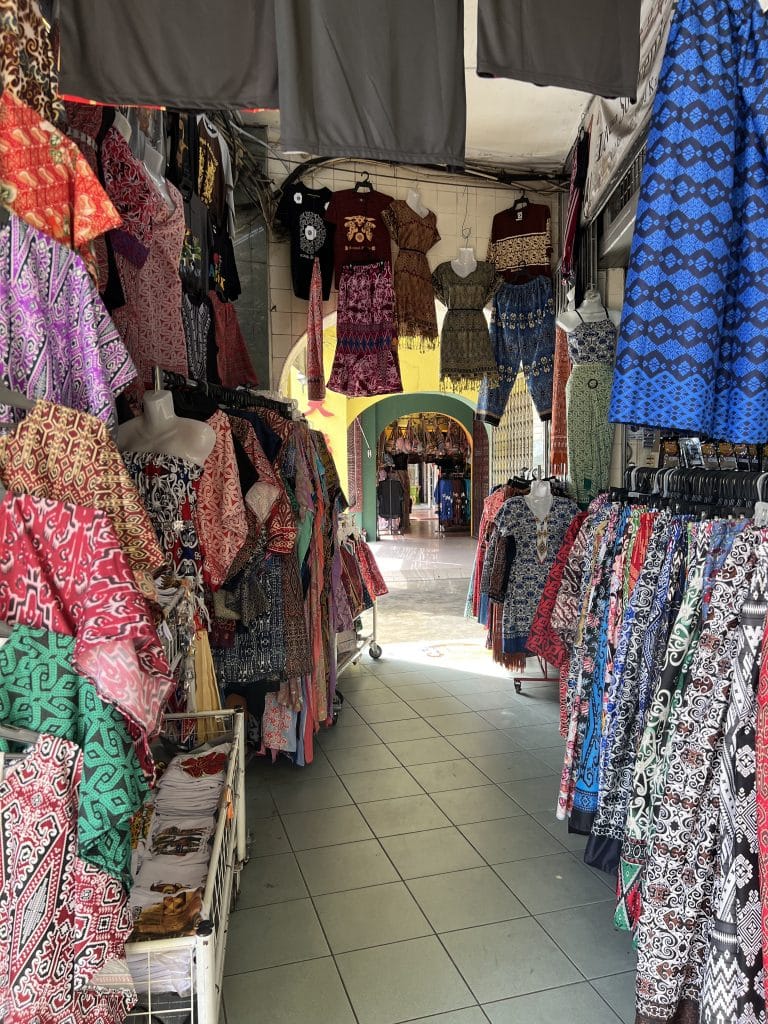WCH10 Borneo!
Our group is just back from the 10th World Congress of Herpetology, Kuching, Sarawak, Borneo! With 1500+ participants this was one of the largest conferences ever. With 10 participants our group was well represented and our research was communicated in quite many talks and posters, below some impressions from this amazing event.


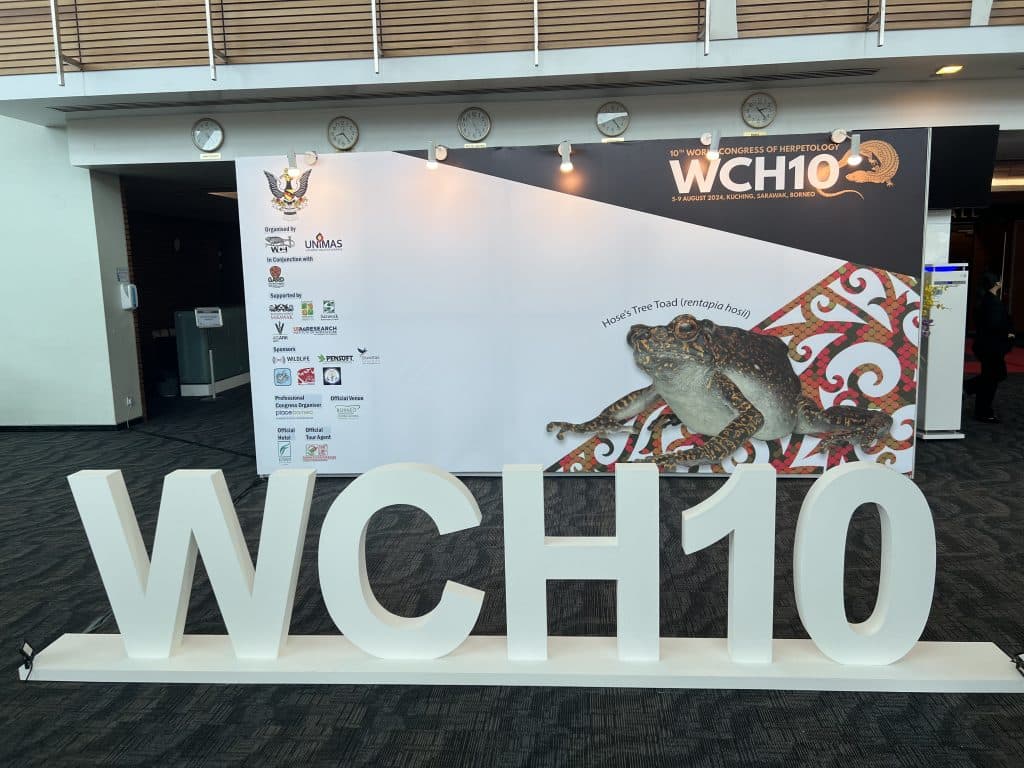

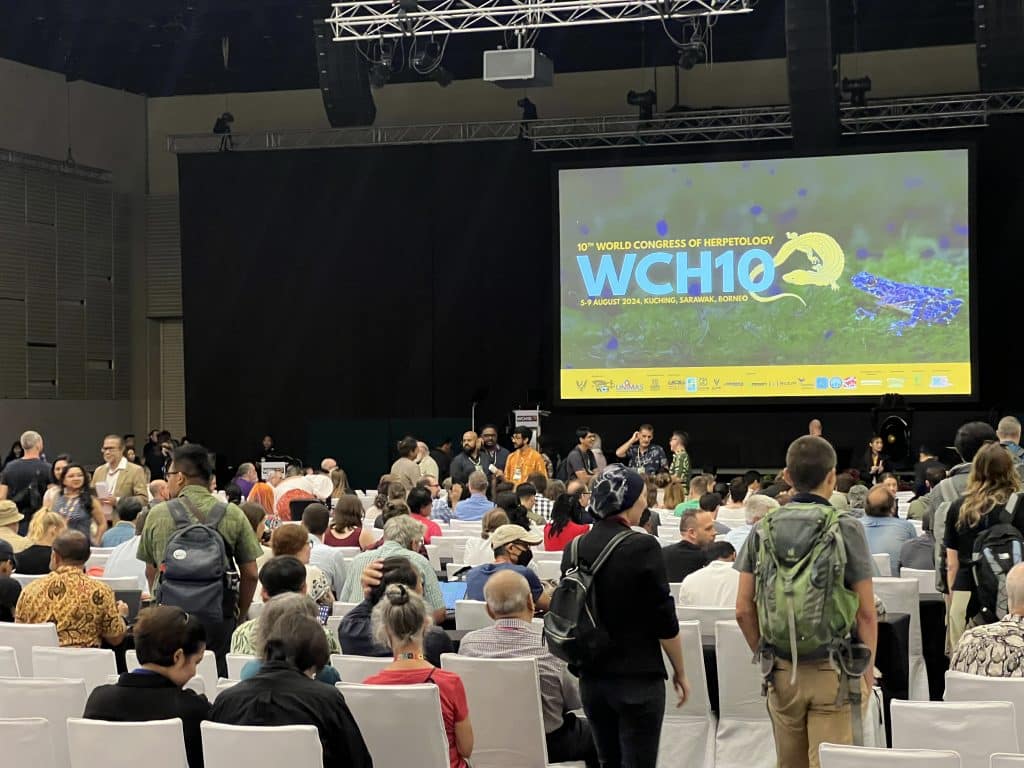
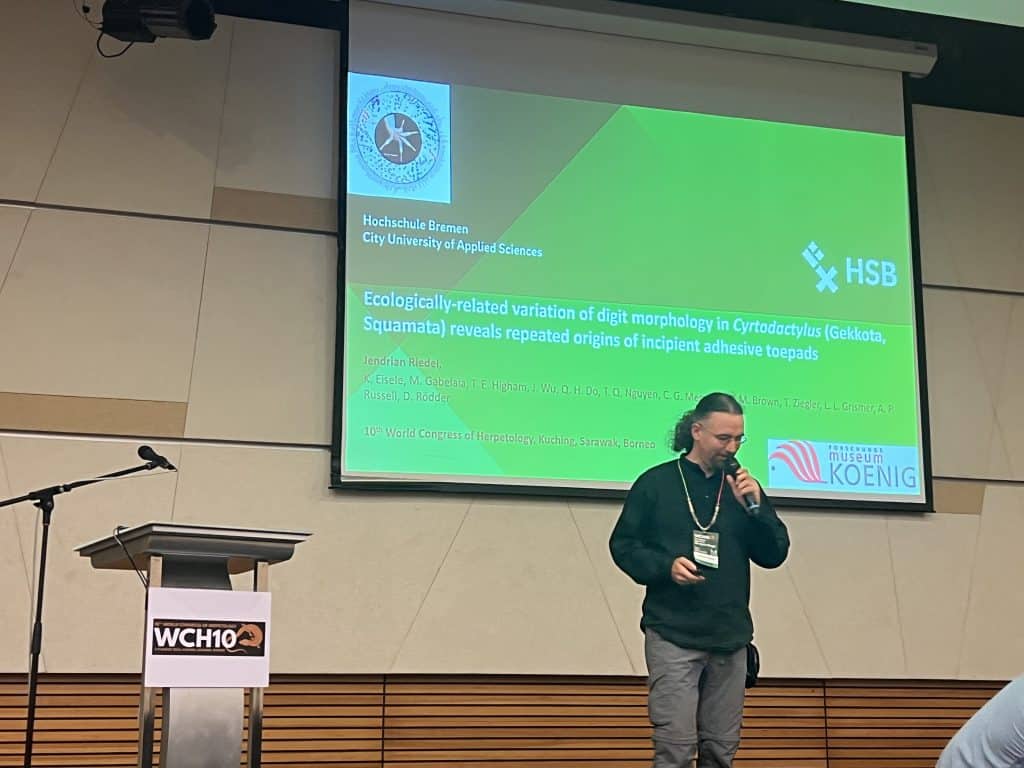
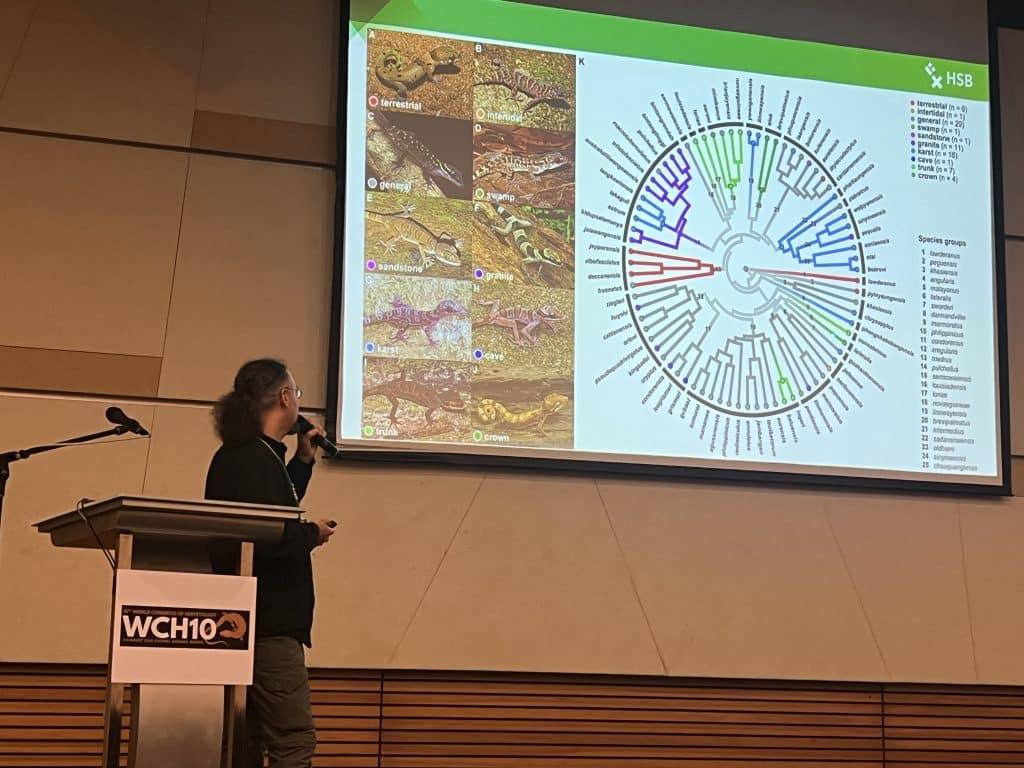
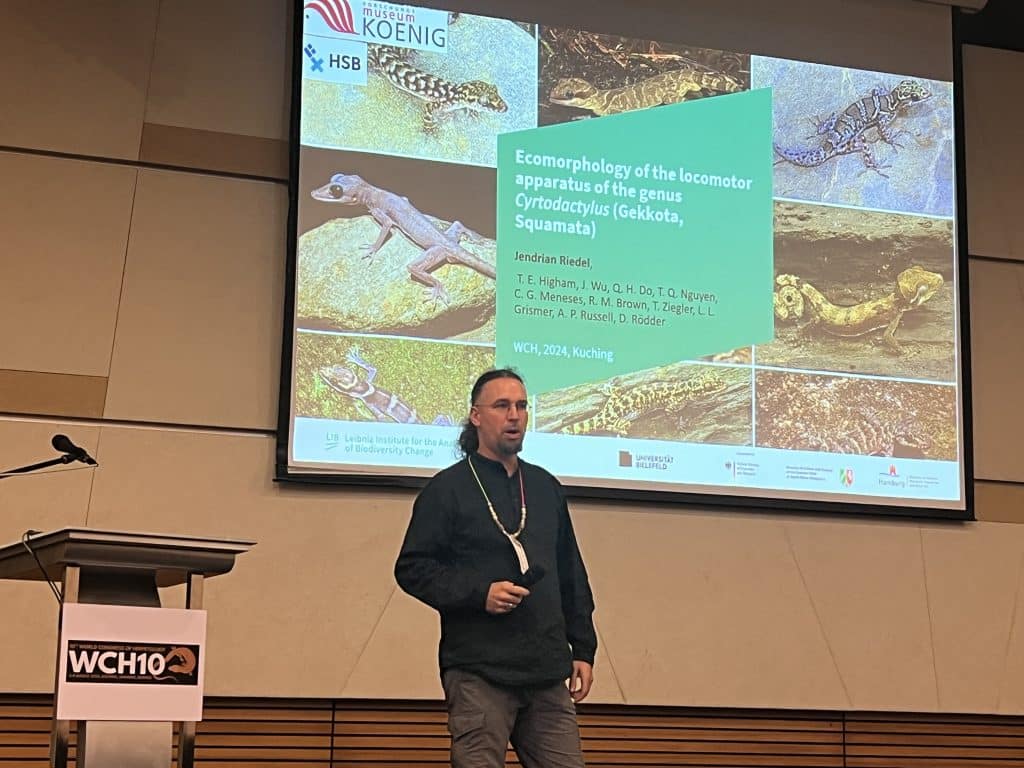
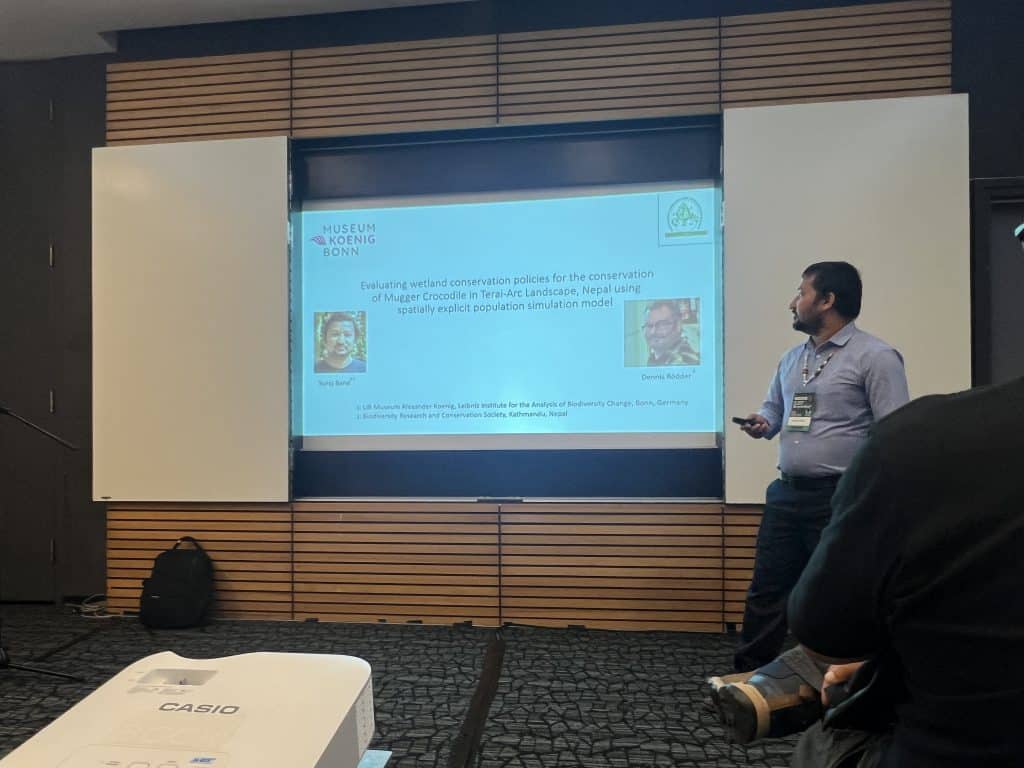
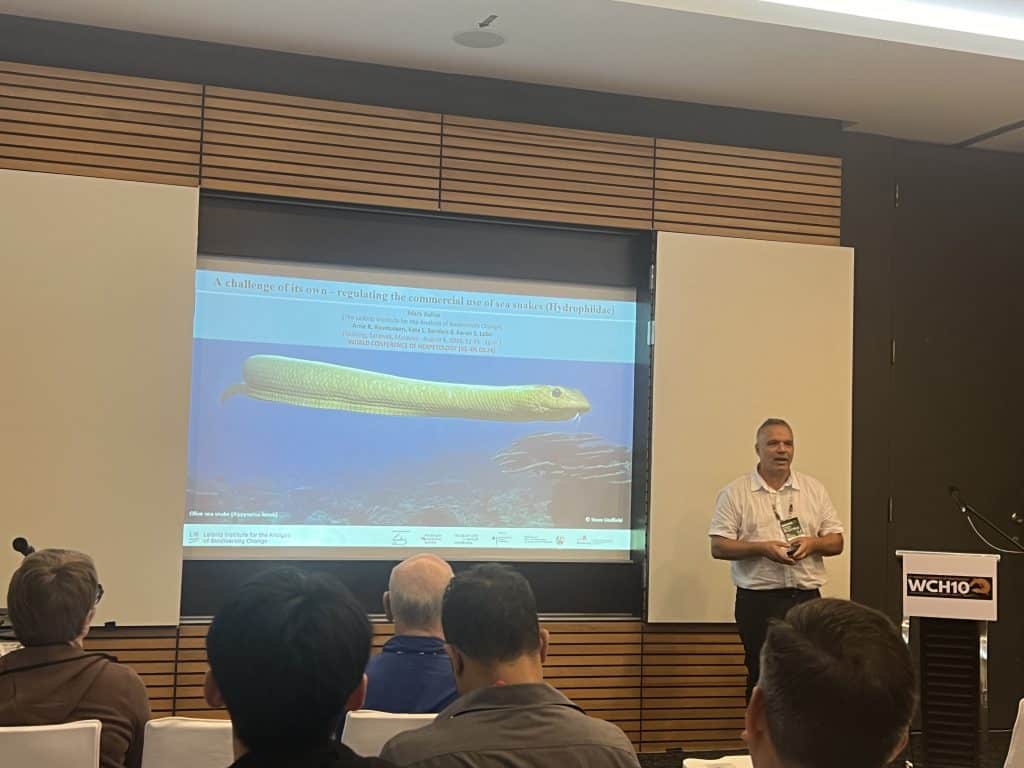
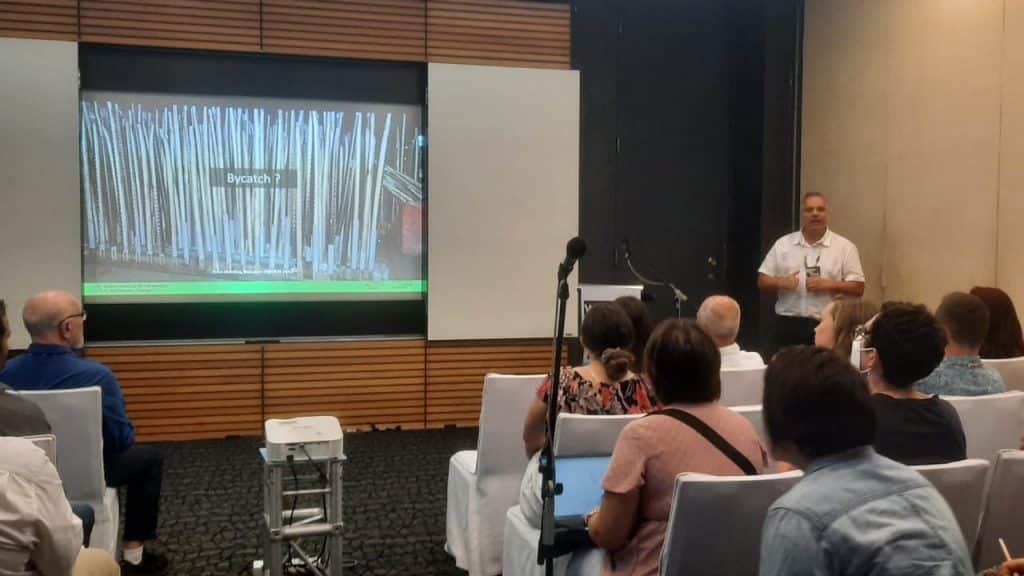
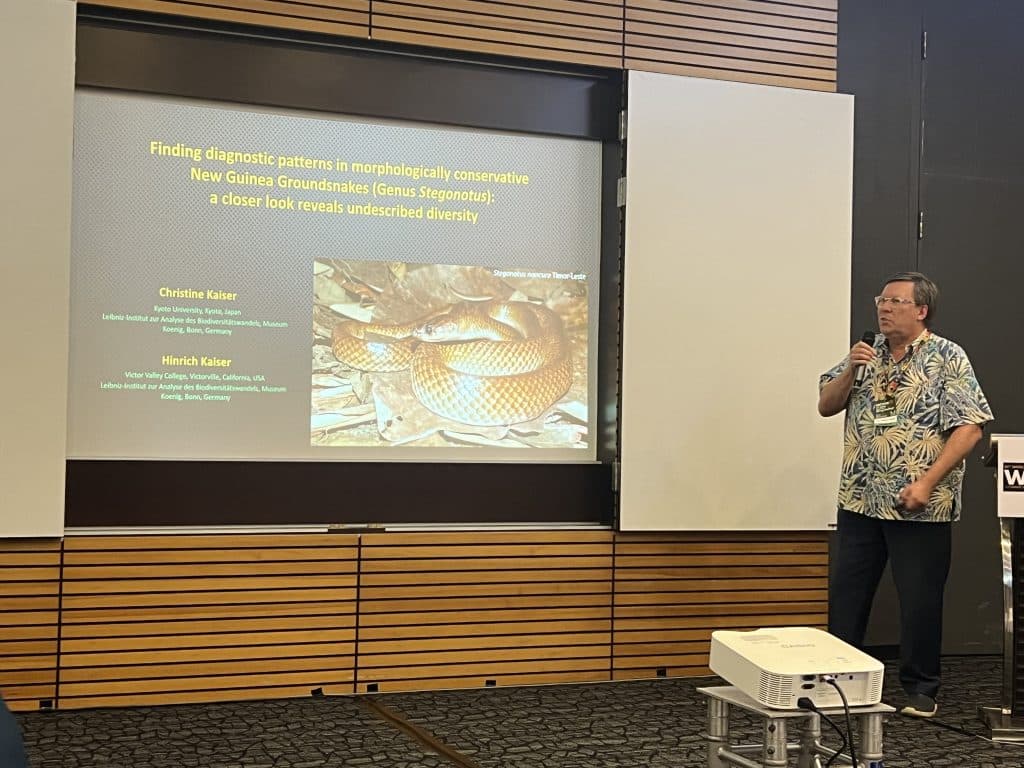
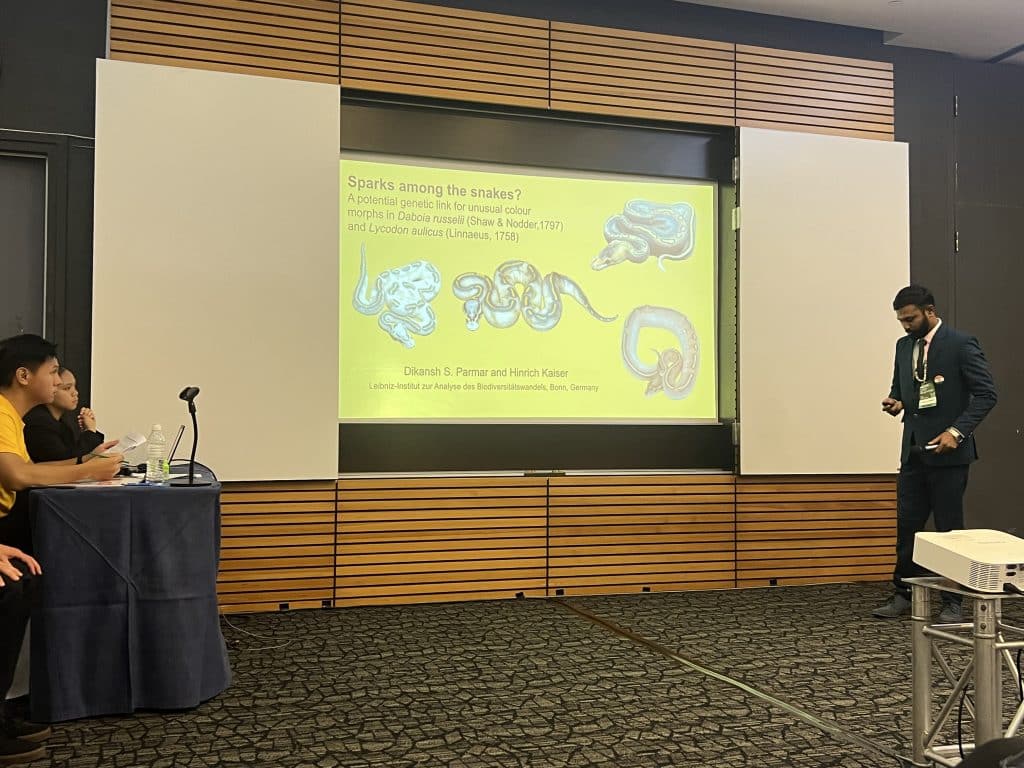
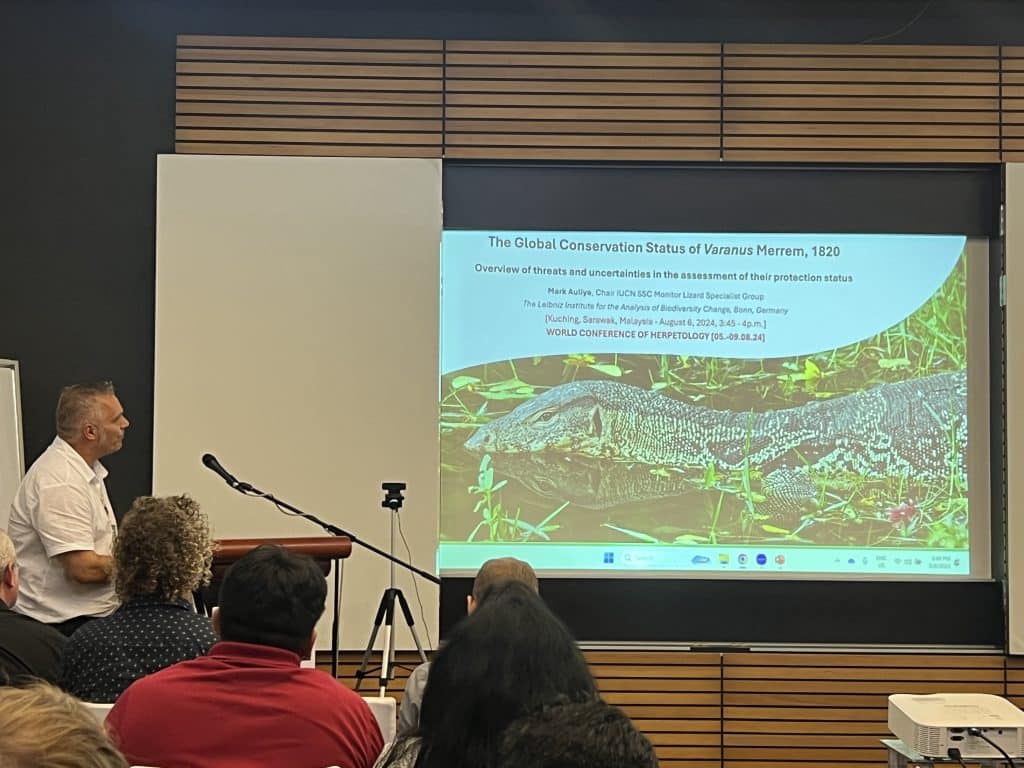
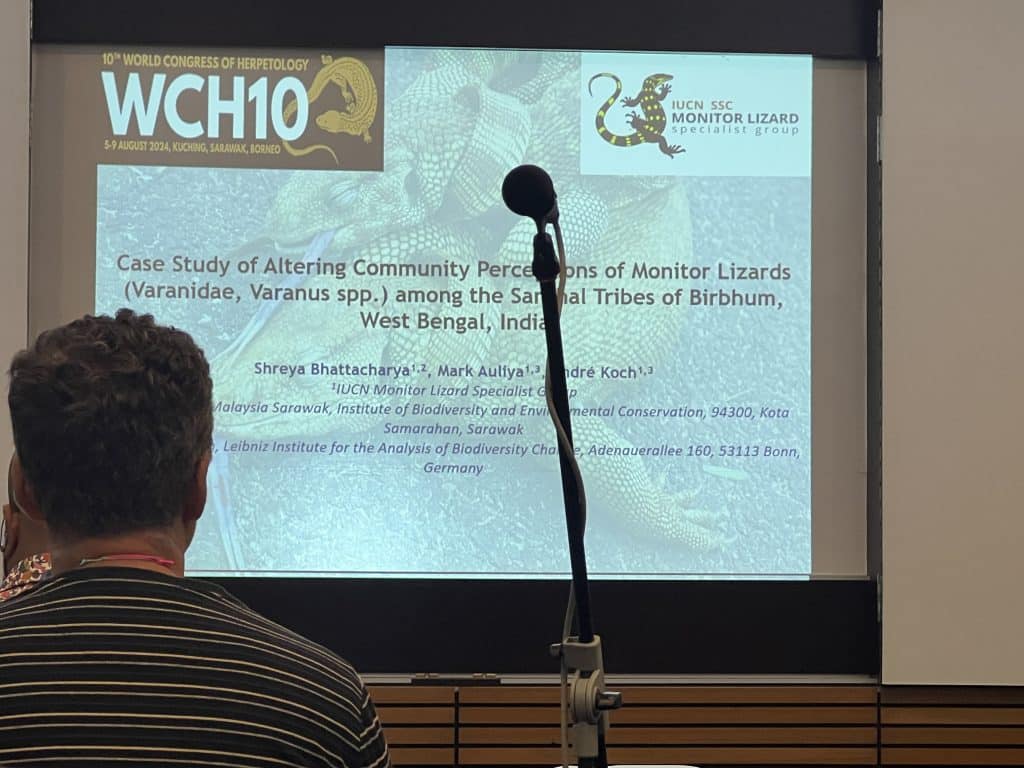
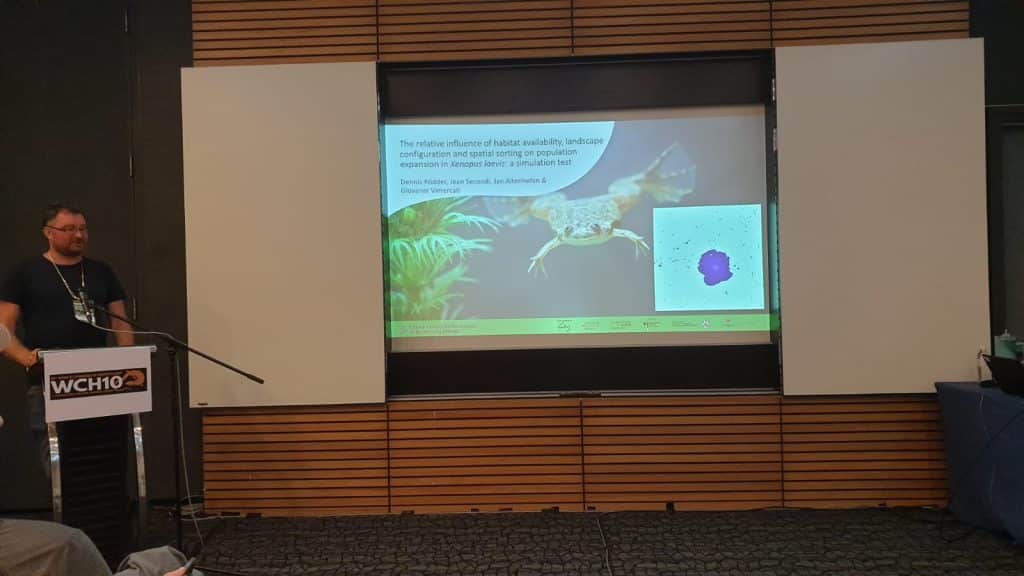
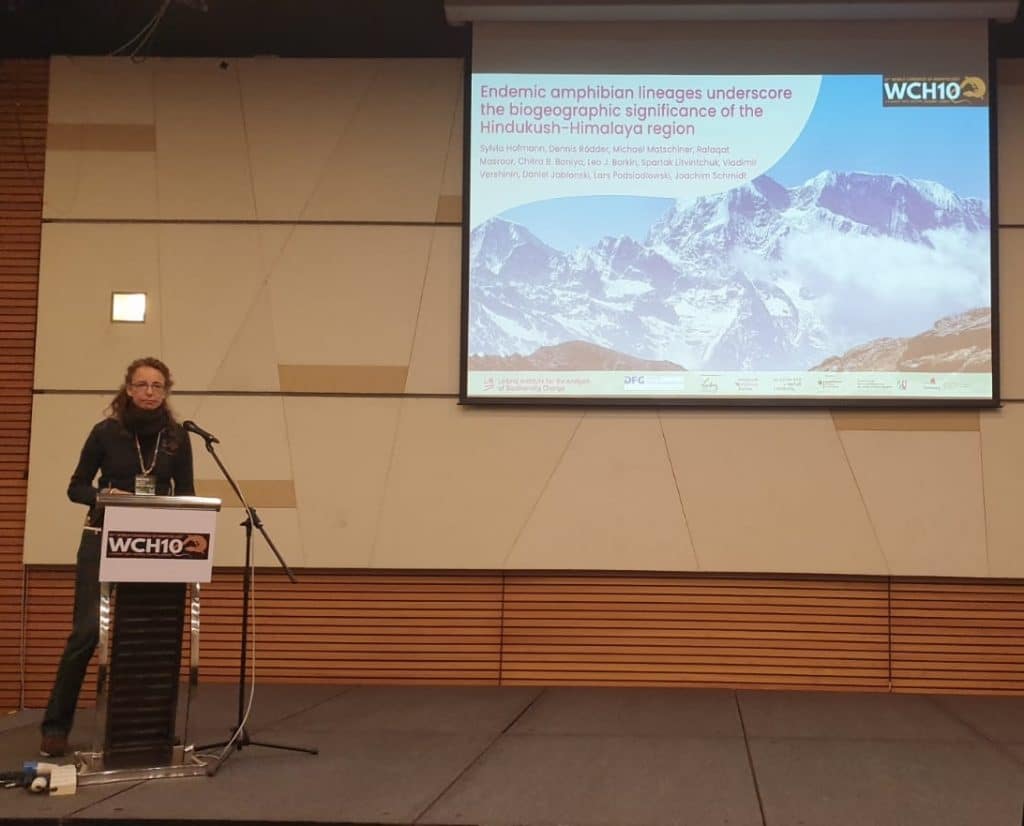
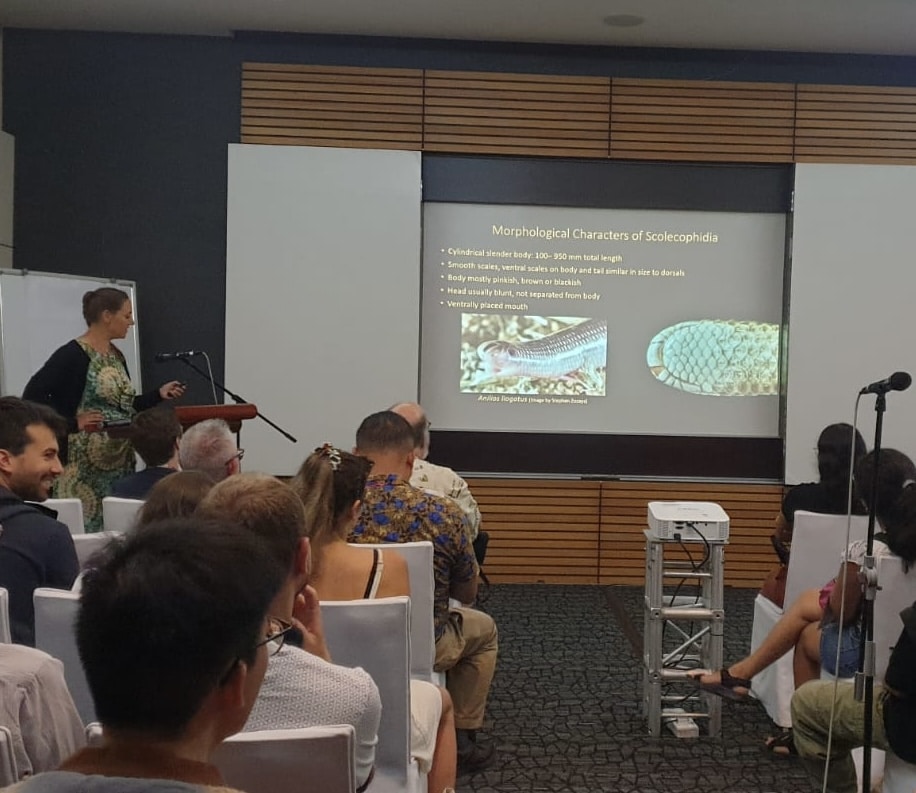
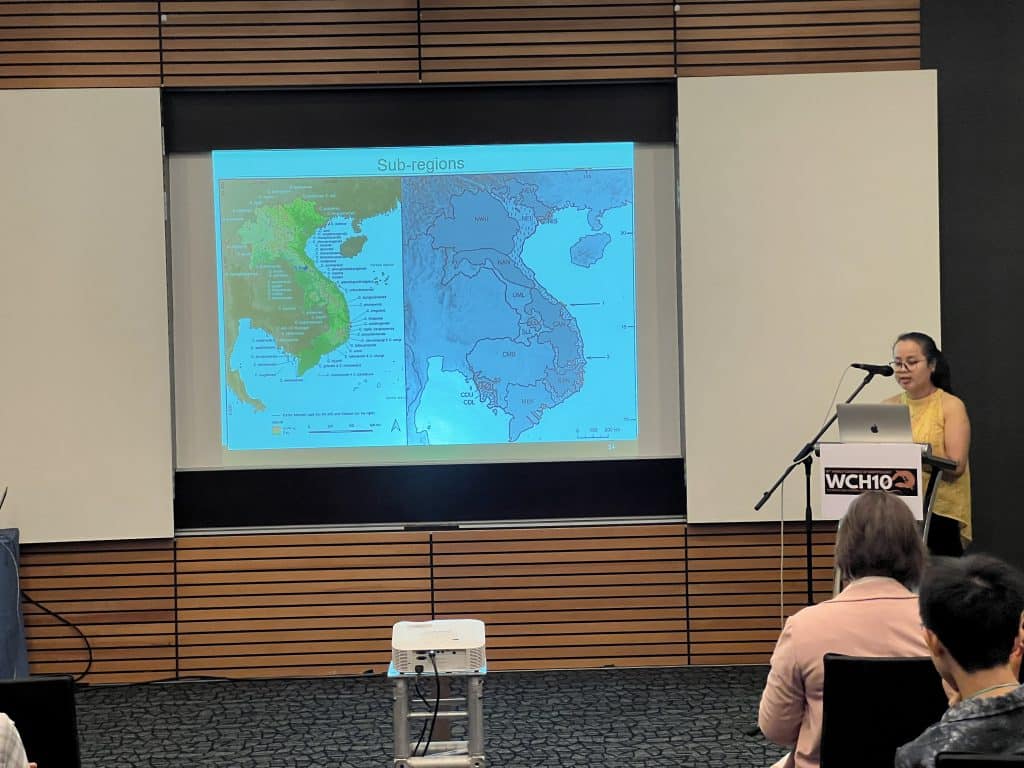
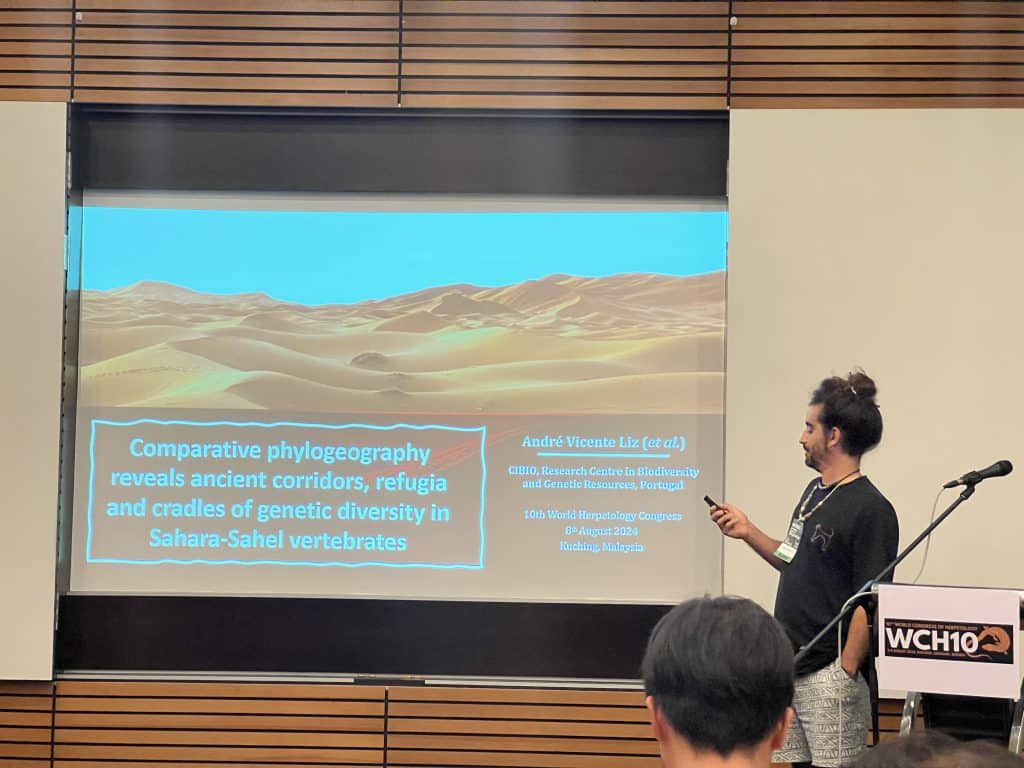
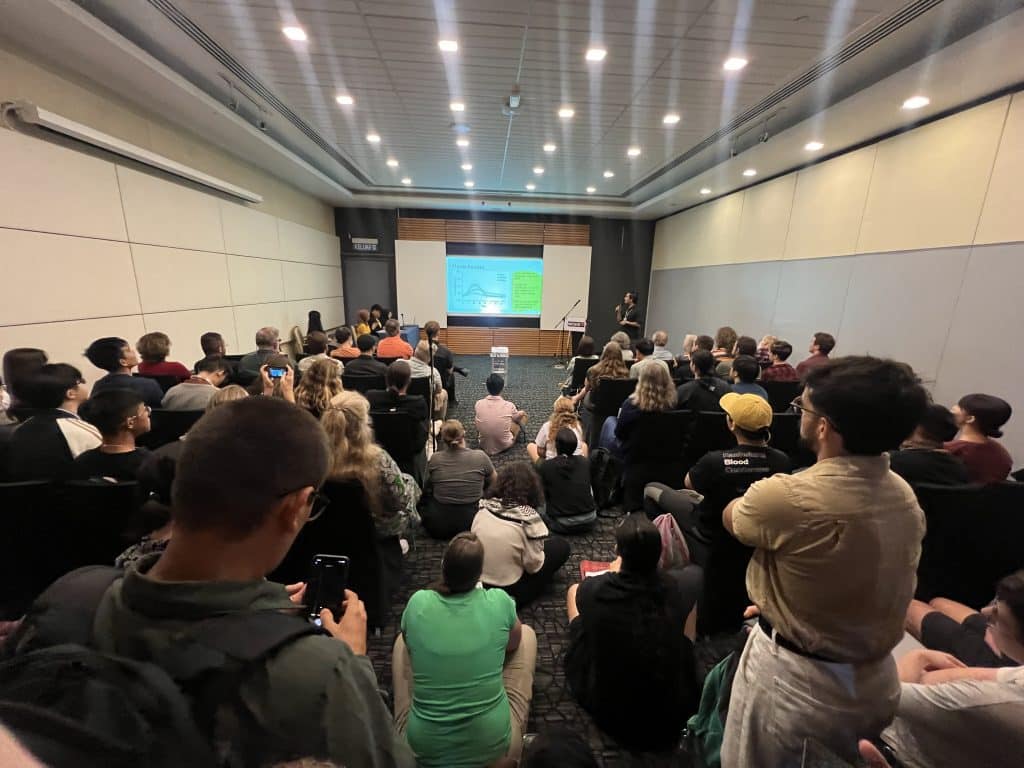
Our contributions in detail:
Auliya, M.: The Global Conservation Status of Varanus Merrem, 1820 – Overview of Threats and Uncertainties in the Assessment of Their Protection Status
In 2003, 58 Varanus species were known to science, today ca. 89 species are known. More than 10 subspecies now have full species rank and new species have been discovered. Currently, 74 species have been evaluated in the IUCN Red List, of which ca. three species require an update due to taxonomic changes, and others likely including new taxa. Among the 74 species, 12 have been assessed in threat categories (CR, EN, VU), two species as Near Threatened (NT), 10 species as Data Deficient (DD), and 50 species evaluated Least Concern (LC). Information on population trends does not necessarily match with Red List categories, e.g., species evaluated LC may have a decreasing population trend. Importantly, in 30 species the population trend is unknown, of which several have been evaluated LC. Year of assessment is crucial to evaluate a species’ current conservation status, in 10 species the year of assessment dates back ≥ 10 years. Analysis of threats indicated in the Red List clearly reveal numerous uncertainties. For almost no species it is possible to indicate the various combinations of threats and the contribution they make to overall declines; accordingly, further research and monitoring is recommended. Various species are utilized for consumption, traditional medicines, hides for the fashion leather industry and the pet trade, with the latter often not indicated in the Red List. Gradually, more space is being given to use and trade as a potential/actual threat, but its assessment as a possible cause of population declines often remains unconsidered. For many Hapturosaurus spp. for example there is a perpetual international demand; information on potential fragmentations of geographically wide-ranging species remain unmentioned, especially when these are well-established lucrative resources. More research is required to eliminate existing uncertainties to establish measures for improved conservation of the Varanidae in the short term.
Baral, S., and D. Rödder: Evaluating wetland policies for the conservation of Mugger Crocodile in Terai-Arc Landscape, Nepal using a spatially explicit population simulation model
Multiple ecosystem services provided by the freshwater ecosystems make them one of the most productive for humans. However, these ecosystems are threatened due to multiple human-induced factors, which have led to the complete or local extinction of many wetland-dependent species and threatening others equivalently. Nepal is no exception to this trend and has lost a significant proportion of healthy wetland ecosystems but only a few policy practices exist for their conservation. In this study, we evaluate the usefulness of these policies to support the conservation of a threatened crocodile the Mugger crocodile in the Terai Arc Landscape of Nepal using a spatially explicit individual-based population model. We define multiple scenarios based on the management recommended by these policies viz. wetland protection in protected areas only, forested areas, government-owned wetlands, and a complete protection of currently identified wetlands. We estimated multiple demographic and dispersal parameters using available literature from multiple species and ran a population simulation model in a freely available program RangeShifter 2.0 for 100 years. We found that the crocodile population persisted for 100 years in all the scenarios. The population at the end of the simulation was significantly higher in the scenario assuming total protection. Maximizing the conservation of wetlands increased the survival of dispersing individuals by creating multiple stepping stones for dispersal and greater availability of habitat patches to hold higher populations. We conclude that the current wetland conservation policies are enough to sustain the population but are not enough to ensure connectivity between the populations. Better protection of available wetland habitats will lead to increased population sizes but might also lead to increased contact with humans. Integrating possible conflict management and means to promote the gene flow of the population in wetland-related policies will promote co-existence in these wetlands.
Bhattacharya, S., M. Auliya and A. Koch: Case Study of Altering Community Perceptions of Monitor Lizards (Varanidae, Varanus spp.) among the Santhal Tribes of Birbhum, West Bengal, India
The “Santhals” are one of the numerous indigenous tribes of India inhabiting several parts of the central and eastern Indian states including West Bengal. Our case study has been conducted in five Santhal villages of the Birbhum district of West Bengal. In spite of the availability of modern food sources and medicines, the tribal communities still significantly utilize and exploit various local wildlife species, especially the Bengal monitor (Varanus bengalensis) and the Yellow monitor (V. flavescens). We explored and documented the utilization patterns, traditional beliefs and taboos related to these species, both of which are nationally protected under the Wildlife (Protection) Act of India, 1972. In addition, V. flavescens has been evaluated “Endangered” and V. bengalensis as “Near Threatened” in the IUCN Red List. Moreover, apart from the regular utilization patterns, the Santhals participate in annual hunting festivals, traditionally known as “Bandla Porob”. Semi-structured questionnaire surveys were conducted among the hunters of the tribal communities in five villages. The results provide several direct proofs of local people utilizing monitor lizards for medicines and food. Based on this specific evidence, we designed awareness workshops for the tribal villagers. The main objective of the workshops was to create a widespread perception among the villagers regarding the importance of biodiversity and its sustainable conservation, with a focus on monitor lizards that play a crucial role in their ecosystems.
Chuliver, M., C. Koch and A. Scanferla: Morphology and Ontogeny of Pelvic Girdle and Hind Limb of Thread Snakes (Serpentes: Leptotyphlopidae)
Threadsnakes (Leptotyphlopidae) retain pelvic and hindlimb elements despite of their limblessness. These minute structures can now be studied in detail thanks to novel techniques such as contrast-enhanced micro-CT. In this study, we provide detailed inter- and intraspecific comparisons of the anatomy of the pelvic girdle and hindlimb elements for thirteen species of leptotyphlopids, including ontogenetic and sexually dimorphic variation in Freiberg’s thread snake, Epictia australis. Leptotyphlopids show different degrees of development of their pelvic skeleton, as it might be formed by three elements (ilium, ischium, pubis) with a well-developed femur (Epictia, Leptotyphlops, Trilepida), one rod-like pelvic rudiment of unknown identity attached to a rounded element assigned to the femur (Tricheilostoma), or a single triradiate element (Myriopholis). Intraspecific variation is present in length or robustness of the individual elements, and asymmetries are found in those species having the largest degree of reduction of the elements. In Epictia australis, the ilium is long, posterodorsally directed and curved, its distal end is cartilaginous and can present two different forms. The ischium is posteriorly directed, rod-like, and its distal end is covered by a conical cartilage. The pubis is short, conical and extends anteriorly in opposition to the femur. The femur is the stoutest bone, it exhibits a thin cartilage covering its distal tip, and a rounded protuberance on its proximal region which is directly linked to a keratinized claw. As in other snakes such as boas and pythons, claws are present both in males and females, located anterolaterally to the cloacal region and slightly protruding between scales. This analysis provides new perspectives to discuss the functional and ecological value of pelvic and limb elements in snakes and, therefore, will shed light on relevant topics such as limb loss or vestigial organs as a source of morphological novelties in vertebrates.
Graboski, R., T. M. Cohen, C. Koch, A. M. Bauer and S. Meiri: Systematic and Taxonomic Survey of Israel’s Land Reptile Biodiversity – and a Blind Snake Example
Cryptic species have always posed a challenge for taxonomists. The advent of DNA sequencing has given biologists a new powerful tool for detecting and differentiating morphologically similar species. Yet, taxonomic studies are usually carried out piecemeal, and in many regions, such as most of the Middle East, they are almost nonexistent. We are conducting a rapid genetic survey of the entire reptilian fauna of Israel and examine genetic diversity within currently recognized species to identify potentially cryptic species and describe them. Fossorial snakes belonging to the Scolecophidia commonly show cryptic diversity. To test the status of the Israeli scolecophidian, the Long-nosed worm snake (Myriopholis macrorhyncha), we conducted the most comprehensive phylogenetic analysis of the M. macrorhyncha species complex. Three mitochondrial genes (12S, 16S, and cyt-b) and five nuclear genes (bdnf, cmos, rag1, nt3, and ame) were partially sequenced for 30 specimens belonging to eight species of the group (including three Israeli specimens). Sequences were aligned and a molecular tree was estimated by maximum likelihood (ML). Our tree for the genus shows five well-supported clades: 1) M. longicaudus; 2) “M. macrorhyncha” from Kenya, M. hamulirostris, M. rouxestevae, and M. boueti; 3) M. blandfordii, “M. macrorhyncha” from Ghana, M. adleri, and M. macrorhyncha from Oman and the UAE; 4) “M. macrorhyncha” from Iran and M. algeriensis; and 5) “M. macrorhyncha” from Israel, Jordan, and Turkey. We identify at least two lineages that represent new species and reveal a need for redefining the distributions of many species. Our molecular approach, based on an extensive taxon sampling, show that Myriopholis diversity has been largely underestimated. Our results highlight the importance of molecular data to understand Israeli reptile diversity.
Hofmann, S., D. Rödder, M. Matschiner, R. Masroor, C. B. Baniya, L. J. Borkin, S. Litvintchuk, V. Vershinin, D. Jablonski, L. Podsiadlowski, and J. Schmidt: Endemic amphibian lineages underscore the biogeographic significance of the Hindu Kush Himalaya region
The endemic spiny frogs of the genera Nanorana and Chrysopaa are key elements of the Hindu Kush and Himalayan amphibian fauna and may share a common biogeographic evolution, rendering them valuable tools for reconstructing the paleoenvironmental history of the Himalaya-Tibet-Orogen. However, little is known about the biogeography, systematics, and distribution of these taxa. We provide phylogenomic data and paleoclimatic niche models for Himalayan spiny frogs. The results strengthen support for a trans-Tibet dispersal of ancestral spiny frogs during the Paleogene and highlight the biogeographic importance of the Hindu Kush-Himalaya region.
Kaiser, H., and C. M. Kaiser: Finding Diagnostic Patterns in Morphologically Conservative New Guinea Groundsnakes (Genus Stegonotus): A Closer Look Reveals Undescribed Diversity
Our recent work on the radiation of groundsnakes, genus Stegonotus, has shown that throughout Wallacea and New Guinea the diversity of these snakes has been underestimated. With many populations falling into the category of “nondescript brown snake”, and with a limited availability of molecular data, we have been forced to rely on a rather exacting morphological approach in order to elucidate the taxonomy of the group. By tracing the nomenclature and type localities of species occurring on the island of New Guinea, we found that incorrect species names have previously been applied to two populations from north of the New Guinea Highlands, whose morphology and molecular affinities clearly indicate that they are distinct, unnamed species. In the southwest of New Guinea’s Bird’s Head Peninsula are two populations, whose morphological distinctiveness from Stegonotus ayamaru indicate that they, too, are unnamed species. Lastly, a preliminary survey of Batanta Island revealed the existence of a third species, in addition to S. iridis and S. derooijae, which is distinct in both coloration and scale counts. The presence of three species in the areas under discussion is unsurprising, given that historical collections document the presence of S. diehli, S. poechi, and S. dorsalis in a relatively small area of Madang Province, PNG. It therefore appears that behind the conservative morphology of these snakes is hidden an unrecognized and undocumented resource partitioning ability.
Koch, C: Diversity of Scolecophidian Snakes
Currently 474 scolecophidian snakes are recognized in five families: Anomalepidae, Leptotyphlopidae, Gerrhopilidae, Xenotyphlopidae, and Typhlopidae. In all scolecophidians strong selection associated with a fossorial lifestyle has led to cranial consolidation, miniaturization, and body elongation, resulting in worm-like habits – usually less than 30 cm in total length, and tiny skulls – often just a few millimeters long. Most scolecophidian species look superficially alike, and among all snakes, they are unsurpassed in difficulty of identification due to their low number of diagnostic characters and the difficulties in accurately illustrating and collecting morphological data due to their small sizes. Both, biologically and taxonomically, the scolecophidians are the least studied group of snakes. The presentation gives an insight into external and internal morphological features of Scolecophidia with a special focus on osteological findings. Furthermore, it provides information on the limited data known so far on the biology and some exciting facts about these fascinating reptiles.
Kupfer, A., Q. Martinez and C. Koch: A Brief Introduction to the Diversity of Subterranean Amphibians and Reptiles
Subterranean habitats are usually lightless, hypoxic and hypercapnic inhospitable environments with scarce food resources that lead to strong evolutionary constraints for organisms inhabiting them. Nevertheless, several amphibians and reptiles i.e., caecilian amphibians, fossorial anurans, amphisbaenians, scolecophidian snakes and many more independently evolved a subterranean lifestyle accompanied with diverse adaptations including elongated bodies, robust skulls, stronger forearms, limb reduction, reproductive modes or even a complete loss of the eyesight. However, due to the inaccessibility of the habitat and a lack of sampling methods the knowledge on the biology of burrowing herpetofauna has lacked far behind. The last symposium dedicated to the biology of subterranean herpetofauna i.e, “Quantifying the ecology of burrowing herpetofauna” held at the WCH5 in Stellenbosch, South Africa dates to 2005. Within nearly two decades much information on several aspects of the biology of fossorial amphibians and reptiles has accumulated. The symposium aims to summarise some of these diverse progresses but will also shine a light on the new developments of the research field.
Liz, A. V., D. Rödder, D. V. Gonçalves, G. Velo-Antón, M. J. Paúl, N. Drake, P. Breeze, P. Tarroso, P. Hopcroft, P.-A. Crochet, R. Godinho, S. B. Carvalho and J. C. Brito: Comparative Phylogeography Reveals Ancient Corridors, Refugia and Cradles of Genetic Diversity in Sahara-Sahel Vertebrates
In the Sahara, climatic oscillations between savannah and desert states for at least the last ten Million years left deep imprints on biodiversity patterns. Mountain and coastal areas have been postulated as ecological refugia and diversification centres, at least for the more mesic communities inhabiting the region, and a series of trans-Saharan green corridors connecting the Mediterranean and Afrotropics have also been suggested. However, these biogeographic hypotheses have only been based on a handful of species. Xeric taxa should present different patterns, but even less is known about these. Accordingly, this work seeks to map vertebrate diversity across the arid ecoregions of North Africa (the Sahara and Sahel) in order to consolidate and test biogeographic scenarios for the region since the Miocene. We used >8,500 geo-referenced DNA sequences and > 28,000 occurrence points from 104 vertebrates (reptiles, mammals, amphibians, and birds) to map intra-specific genetic diversity (ISD) and connectivity, and model past species habitat shifts, considering climate, hydrology, vegetation, and substrate information. By analysing the concordance between genetic and ecology-based inferences, we attempted to identify diversity hotspots, refugia and corridors, and compare spatial patterns among mesic and xeric species. For xeric taxa, the northern Sahara, together with the southwestern Sahel, was identified as the main ISD hotspot. Ecological results supported northern Sahara refugia, which extended southwards. For mesic taxa, ISD hotspots covered most Saharan highlands, the Nile Valley, coastal areas, and the Niger Delta. Refugia were mostly concordant with ISD hotspots. Ecological xeric connectivity was overall widespread, while genetic corridors primarily included the Atlantic Sahara, the Nile Valley outskirts, and the eastern Sahel. Mesic corridors included the Atlantic coast and, to a greater extent, the Central Sahara highlands. The patterns recovered by this comprehensive study should help understand the historical biogeography of the largest warm desert on Earth.
O’Shea, M., and H. Kaiser: Introducing the Secretive Serpents of Paradise, the Endemic New Guinea Elapid Genus Toxicocalamus (Elapidae: Hydrophiinae)
Toxicocalamus is a genus of rarely seen, vermivorous, oviparous, hydrophiine elapids, endemic to the island of New Guinea and its satellite islands and archipelagos. A century after George Albert Boulenger named the genus in 1896, Toxicocalamus contained 10 taxa (nine species and one subspecies). However, since 2009, resurgent interest in the genus has elevated this number to 24 species, of which 13 have been examined using molecular data. Toxicocalamus is now the largest, non-marine, alethinophidian snake genus in the Australasian-Melanesian region, and it is set to become even larger as further species will be described in the near future. Yet Toxicocalamus also remains a relatively understudied genus, with dietary preferences and reproductive status largely obtained from post-mortem examination. Toxicocalamus species are almost unique amongst terrestrial Papuan elapids in lacking a temporolabial scale between the penultimate and ultimate supralabials, along with only Pseudonaja. Several members of Toxicocalamus are relatively stout-bodied and quite sizeable (up to 1.0 m in total length in two species), there is also a number of extremely slender “bootlace” species with especially short tails, that may be more fossorial or semi-fossorial in habit. The stouter species exhibit typical colubrid-elapid head scutation; 15-15-15 dorsal scale rows; six supralabials; the cloacal covering consisting of two scales; and paired subcaudals, whereas the “bootlaces” display a great deal of variation. Dorsal scales are arranged in 13-13- 13, 15-15-15, or 17-17-17 rows; subcaudals can be paired or single; the cloacal covering can be formed from one or two scales; the supralabials can number from 4–6, and the species exhibit a diverse array of head scute fusions including fused inteasal + prefrontal; preocular + prefrontal; inteasal + preocular + prefrontal; frontal + supraoculars; supraocular + postocular; and supralabials + temporals, which provide valuable clues that aid in the identification of a specimen in hand.
O’Shea, M., F. Kraus and H. Kaiser: Hidden Diversity and Natural History of the Secretive New Guinean Worm-eating Snakes, Genus Toxicocalamus (Elapidae: Hydrophiinae), Revisited
Toxicocalamus is an elapid genus represented by 526 specimens in thirty collections worldwide. It is a genus of diual but secretive, terrestrial, or fossorial, oviparous, vermivorous snakes, endemic to the island of New Guinea and its satellite islands. These snakes inhabit rainforest, hill and pre-montane forests, or montane grasslands, but one species is especially common in earthworm-rich highland garden systems. Most species are relatively small (< 600 mm in SVL), but two species approach or exceed 1.0 m total length. Many species exhibit distinctive head-scute fusion arrangements that greatly aid in their identification. The genus was erected in 1896 by George Albert Boulenger based on T. longissimus from Muyua (Woodlark) Island, a satellite of New Guinea off the southeast coast of New Guinea. During the remainder of the 19th Century additional species were described, both in Toxicocalamus but also in three other genera (Apistocalamus, Pseudapistocalamus, Ultrocalamus) that were later reduced to subgenera within Toxicocalamus. By the end of the 1960s, Toxicocalamus comprised nine species, and this number remained constant for forty years until a new generation of herpetologists started to investigate the genus. Since 2009 a further twelve species have been described and three have been resurrected from synonymy, bringing the current total to 24 species, making Toxicocalamus the most diverse terrestrial alethinophidian snake genus east of the Wallace Line and descriptions of further new species are currently in preparation.
Parmar, D. S., and H. Kaiser: Sparks among the snakes? A potential genetic explanation for unusual color morphs in Daboia russelii (Shaw & Nodde, 1797) and Lycodon aulicus (Linnaeus, 1758) from India
Along with the well-documented color polymorphisms of various snakes bred in the pet trade, more and more reports of color aberrations in snakes encountered in the wild are being published. This is likely a consequence of the increased activities of snake rescue teams around the globe and the resultant higher level of snake awareness among local human populations. We found unusual color morphs in two vipers, Daboia russelii, and a wolfsnake, Lycodon aulicus, in India. These snakes display a strongly abnormal coloration, with near-leucistic and unpatterned vipers and a nearly unpatterned wolfsnake. Yet each of these snakes possesses striking vertebral lines. The uniformly brown L. aulicus has a normal neck band but the expected transverse banding pattern is missing. The coloration of the vertebral scale row and its two adjacent scales creates a longitudinal pattern of a dark brown vertebral line framed in a cream color, beginning 11 scales beyond the parietals and extending two thirds the body length. In contrast, the line pattern in the vipers begins at the neck and consists of three un- or lightly pigmented scales along the vertebral line, framed by a single row of dark scales on either side and extending more faintly onto the posterior part of the body. While the primarily white viper from Gujarat retains the dark lateral rings that typically offset different shades of brown in normal phenotypes, the body of the subadult from Goa is a patternless light brown. The patterning is strongly reminiscent of a genetic modification in the pathway controlling chromatophore development that has been called spark/spark in ball pythons (Python regius). Detailed genetic studies of this phenomenon would be ideal, but the uniqueness of these color aberrations in these two species makes such work impractical – but it reveals nature as a sometimes-eccentric painter of lines.
Reilly, S. B., B. R. Karin, U. Arifin, H. Kaiser, A. L. Stubbs, E. Arida, A. Hamidy, D. T. Iskandar and J. A. McGuire: Phylogenomics of Lesser Sunda Emerald Tree Skinks (Lamprolepis smaragdina) Uncovers a Broad Range Expansion Followed by Low Gene Flow
The Emerald Tree Skink, Lamprolepis smaragdina, is an arboreal lizard that is well adapted to over-water dispersal and is found throughout Wallacea and the western Pacific islands. These lizards are found on every major island in the Lesser Sundas where they exhibit one or more of three distinct color patterns: a green morph, a brown morph, and a half-green half-brown morph. Given this species’ propensity to successfully disperse from island to island, we expected to find moderate levels of gene flow and low genetic divergence between Lesser Sunda island populations. We used both mitochondrial (1426 bp for 174 lizards) and exoncapture (1411 sequence loci for 104 lizards) datasets to reconstruct phylogenetic relationships and estimate divergence times and levels of migration for L. smaragdina populations across 12 Lesser Sunda islands. The results support a scenario where the Lesser Sundas assemblage diverged from the Peleng Island (off eastern Sulawesi) population ~1.5 Ma with subsequent dispersal events within the Lesser Sundas occurring between 1–0.4 Ma. Biogeographical model testing supports a scenario where many dispersal events occur parallel to or against major longterm oceanic currents of the “Indonesian Throughflow”. While some of the mito-nuclear discordances indicate secondary dispersal events have occurred between established populations, genomic estimates of migration show near total genetic isolation of all populations. This implies that either population sizes are too large to detect the genes of more recent migration events, or that recent migrants are unable to successfully reproduce with the established population.
Riedel, J., K. Eisele, Y. Ecker, T. Higham, J. Wu, Q. H. Do, T. Q. Nguyen, C. G. Meneses, R. M. Brown, L. L. Grismer, T. Ziegler, A. P. Russell, and D. Rödder: Evolution of incipient toepads in a radiation of ecologically diverse geckos
Adhesive toepads have evolved repeatedly in a variety of clades to promote attachment to inclined surfaces in climbing species. Among amniotes, geckos are the most thoroughly studied with regard to their adhesive toepads. Even so, the evolutionary origin of these complex structures is still elusive, this being partially due to the scarcity of studies on species with incipiently developed toepad morphologies. One suggested model for the presence of incipient toepads are the bent-toed Geckos (Genus Cyrtodactylus), an ecologically diverse radiation, the climbing members of which possess enlarged subdigital scales. It is known that a few such species carry spatulated setae as microstructures on these scales. Given this, we explore the evolution of incipient toepad morphology in Cyrtodactylus species from different microhabitats (ecotypes) in relation to habitat use (terrestrial, arboreal, rock-dwelling and generalists) to unravel how and under which ecological circumstances adhesive toepads evolved. We measured size-corrected subdigital scale area, examined subdigital scale shape using 2D geometric morphometrics, and subdigital microstructures using scanning electron microscopy (SEM). We reconstructed the evolution of these traits and tested whether species occupying different microhabitats differed in their subdigital scale morphology. We found that both arboreal and rock-dwelling species had relatively larger subdigital scale areas, but partly differed in scale shape. Microstructures also differed among ecotypes with spatulated setae being more prevalent in climbing species.
Riedel, J., L. L. Grismer, T. Higham, J. Wu, Q. H. Do, T. Q. Nguyen, C. G. Meneses, R. M. Brown, P. D. Campbell, T. Ziegler, A. P. Russell and D. Rödder: Ecomorphology of the Locomotor Apparatus in the Genus Cyrtodactylus (Gekkota, Squamata)
Adaptive radiations garner considerable interest from evolutionary biologists. Lizard radiations diversifying along structural niche space often exhibit distinct changes in body and limb proportions. One prediction is that terrestrial species inhabiting open habitats will have relatively longer hindlimbs, associated with faster running speeds, while scansorial species will have relatively shorter limbs to keep the centre of mass closer to the substratum. Alternatively, terrestrial species in densely vegetated habitats could benefit from relatively shorter limbs to prevent entanglement with more frequently encountered obstacles, whereas scansorial species could benefit from longer limbs promoting greater limb spans and static stability. Cyrtodactylus, an ecologically diverse gekkonid genus, includes numerous specialists with narrow structural niches, but the degree of morphological diversification exhibited by these specialists is largely unknown. We investigated associations between locomotor morphology and structural microhabitat use in Cyrtodactylus to test if either of the opposing predictions can be corroborated for this radiation. We measured body length and relative limb dimensions of 87 species, covering multiple independent transitions among structural microhabitat preferences. Using these data, we reconstructed the phylomorphospace and tested for associations between structural microhabitat niche and limb morphology. We found strong separation between structural niche groups in accordance with the second hypothesis, although overlap is evident among functionally related niches such as those of granite and karst specialists.
Rödder, D., J. Secondi, J. Altenhofen and G. Vimercati; The Relative Influence of Habitat Availability, Landscape Configuration and Spatial Sorting on Population Expansion in Xenopus laevis: A Simulation Test
Population expansion into new areas is a common phenomenon driven by changes in ecological conditions. It also increasingly results from human-assisted introduction of propagules into novel environments, which leads species to spread into areas where they did not evolve and cause various ecological and socio-economic impacts. Spatial sorting (the enhanced dispersal capacity in expanding populations over time) and landscape configuration are two factors that largely influence the way organisms move across a landscape and reach locations to complete their life cycle. While both factors have been frequently studied independently, their relative influence to modulate the spread rate of expanding populations has been significantly unexplored. We simulated the spread of an invasive amphibian, Xenopus laevis, in various landscapes of its colonized ranges and surroundings in western France. By using the software UNICOR, we ran colonization simulations on 30 x 30 km cells of an experimentally parameterized resistance layer at three settings of spatial sorting. Results show that habitat availability (ponds density) and spatial sorting positively affected the rate of population expansion in the cells and interacted: higher spatial sorting and pond density increased the invaded area, number of colonized ponds and maximal traveled distance per time unit. In contrast, none of the four landscape configuration metrics improved the models, suggesting that this factor has limited influence on population expansion. The effect of spatial sorting on population spread was enhanced by pond density but not by landscape configuration. These results may partly reflect the high density of ponds and the relative contribution of landscape configuration may be reevaluated in different landscape types. Nevertheless, these highlight the importance to consider jointly habitat availability and spatial sorting in predictive modeling of the spread process in expanding populations, such as those that characterize many alien species.
Tan, W. C., V. Vitalis, J. Sikuim, D. Rödder, M.-O. Rödel and S. Asad: High Freshwater Turtle Occupancy in a Sustainably Managed Tropical Forest, Borneo
Despite suffering dramatic declines due to habitat loss and overexploitation, tortoises and freshwater turtles, particularly those in Southeast Asia remain largely understudied. This region is not only a diversity hotspot, but also the centre of an international turtle trade and increasing anthropogenic pressures. In the face of these threats, the utility of sustainable forest management for the conservation of threatened freshwater turtle populations is unknown. This study examines the impact of Reduced Impact Logging, a sustainable forestry method, on two freshwater turtle species. We examined the detectability and habitat relationships of a threatened hard-shelled turtle, Notochelys platynota and a non-threatened soft-shelled turtle, Dogania subplana within a commercial forest reserve in Sabah, Malaysian Borneo. Using single-species occupancy models, we identified covariates associated with the detection and occupancy probabilities of the species across a post-harvest recovery gradient (1–21 years since logging). Results for D. subplana were inconclusive. In contrast, we found a significant negative association between monthly rainfall and N. platynota detectability. The occupancy probability of N. platynota was positively associated with greater distance from logging roads and higher stream flow accumulation. Occupancy probability for N. platynota and D. subplana was relatively high throughout the reserve. These results, suggest that forests managed sustainably, i.e. using RIL methods, could serve as invaluable conservation areas for imperiled freshwater turtle species in the region.


